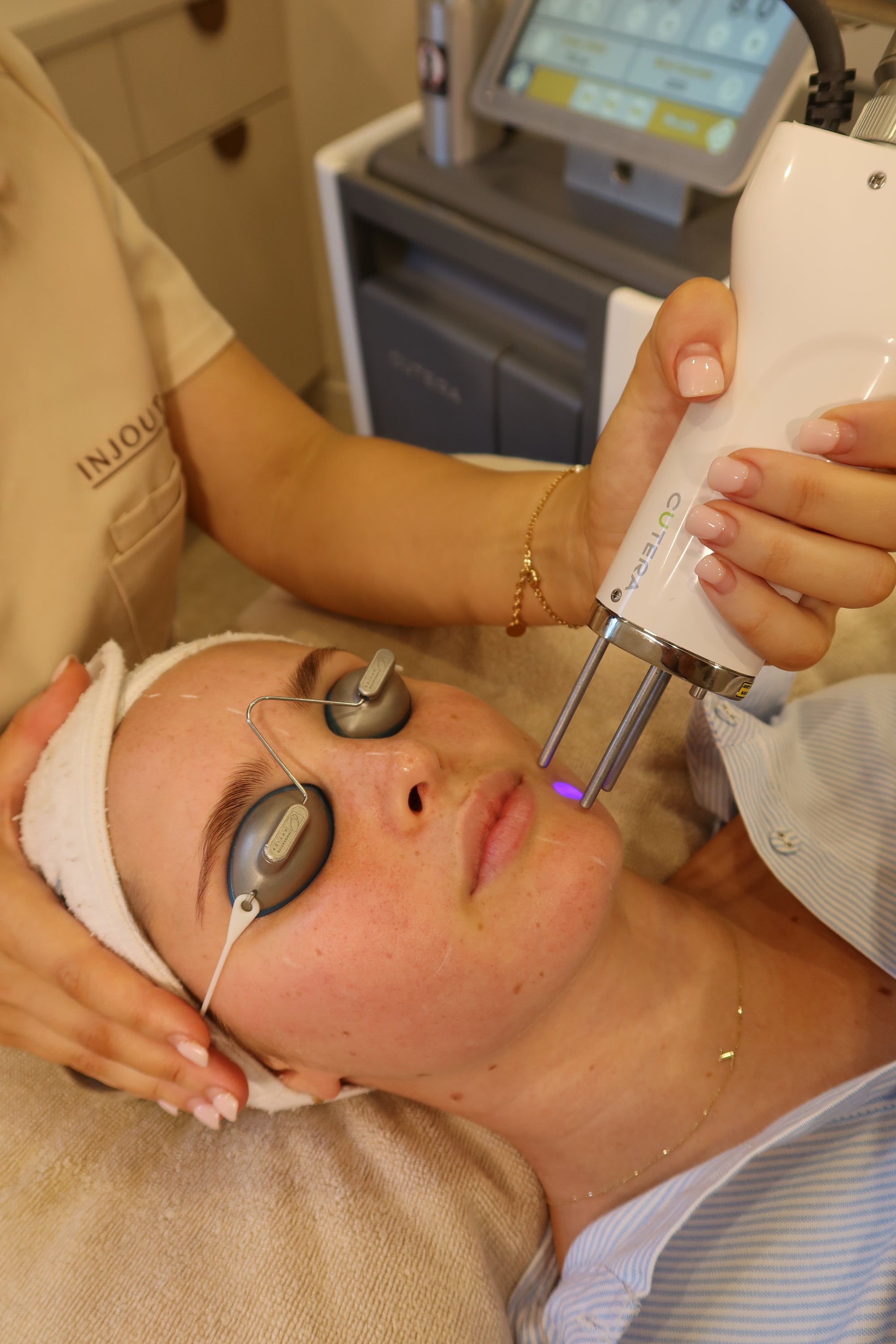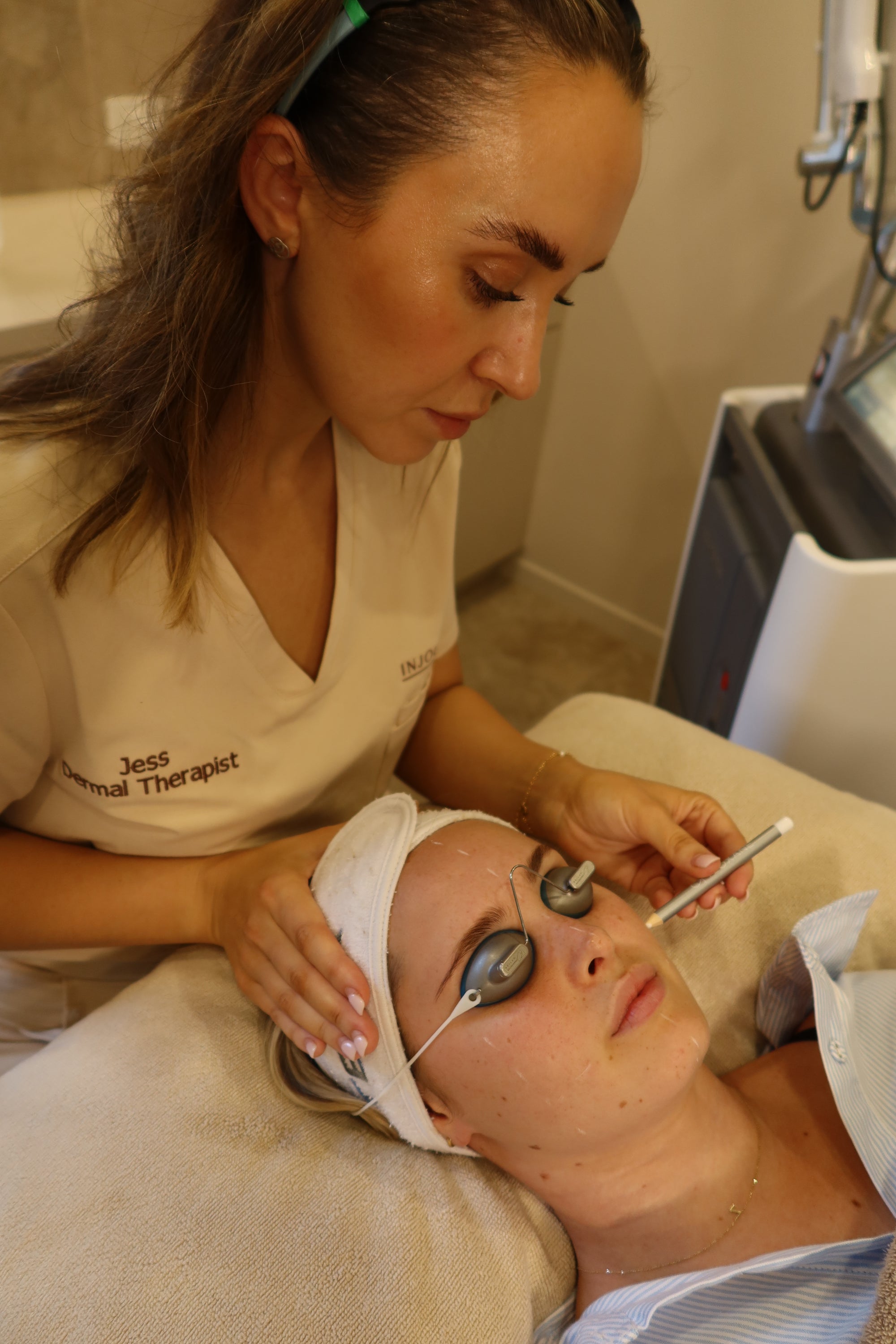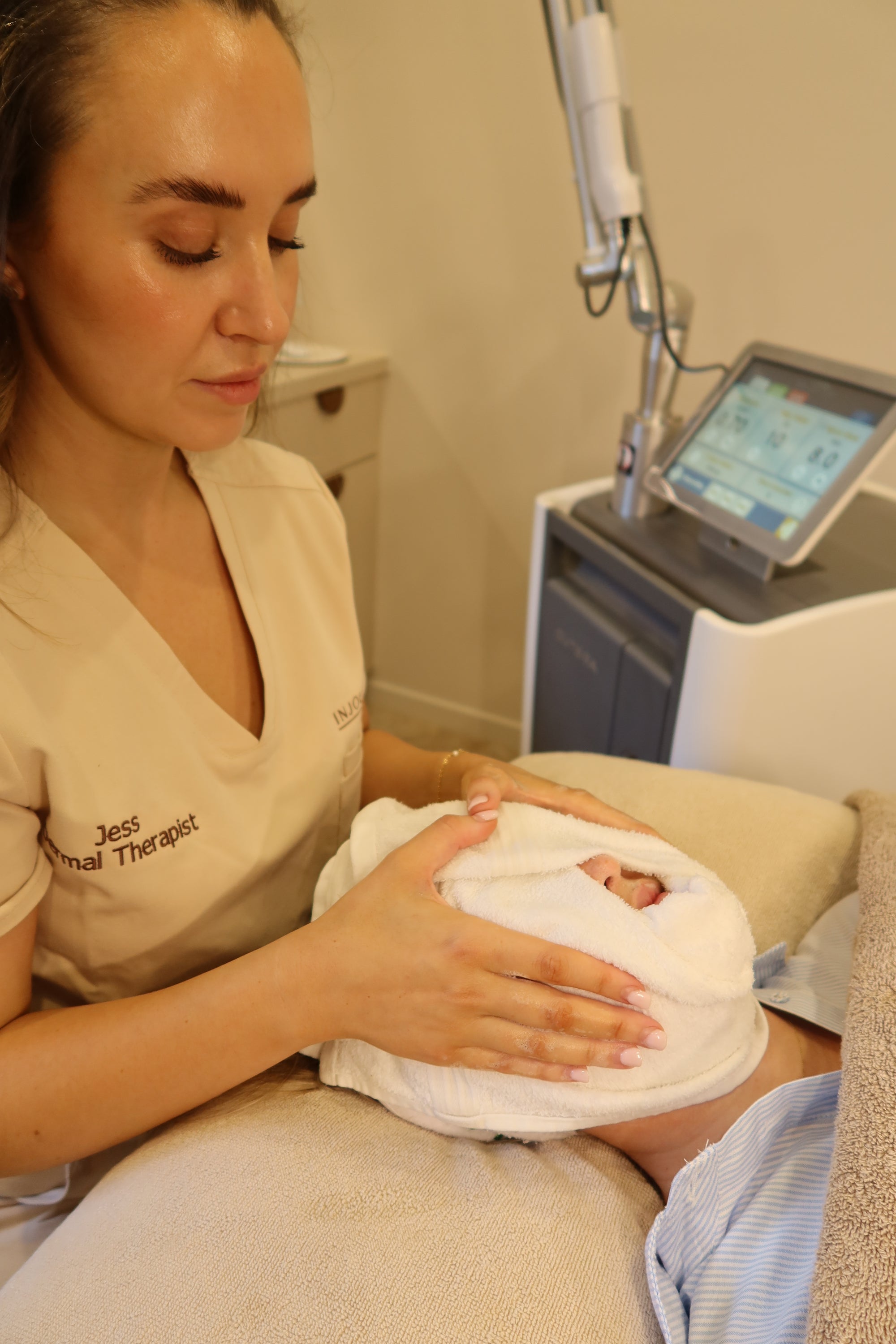
PRE AND POST CARE
Before your treatment, avoid direct sun exposure and discontinue any active skincare ingredients like retinoids, AHAs or BHAs for one week. Please let us know if you’ve had recent skin treatments, or if you’re taking medications that may affect your skin’s sensitivity. Arrive with clean, makeup-free skin so we can tailor the session to your exact needs.
After treatment, your skin may feel warm and appear slightly pink or flushed. This usually settles within a day or two. Keep the skin calm and moisturised using gentle products, and avoid exfoliants or actives during the healing period. Use SPF daily and limit sun exposure to help prevent new pigmentation from forming. Visible improvements will continue to develop over several weeks.

LASER FOR MELASMA & PIGMENTATION


